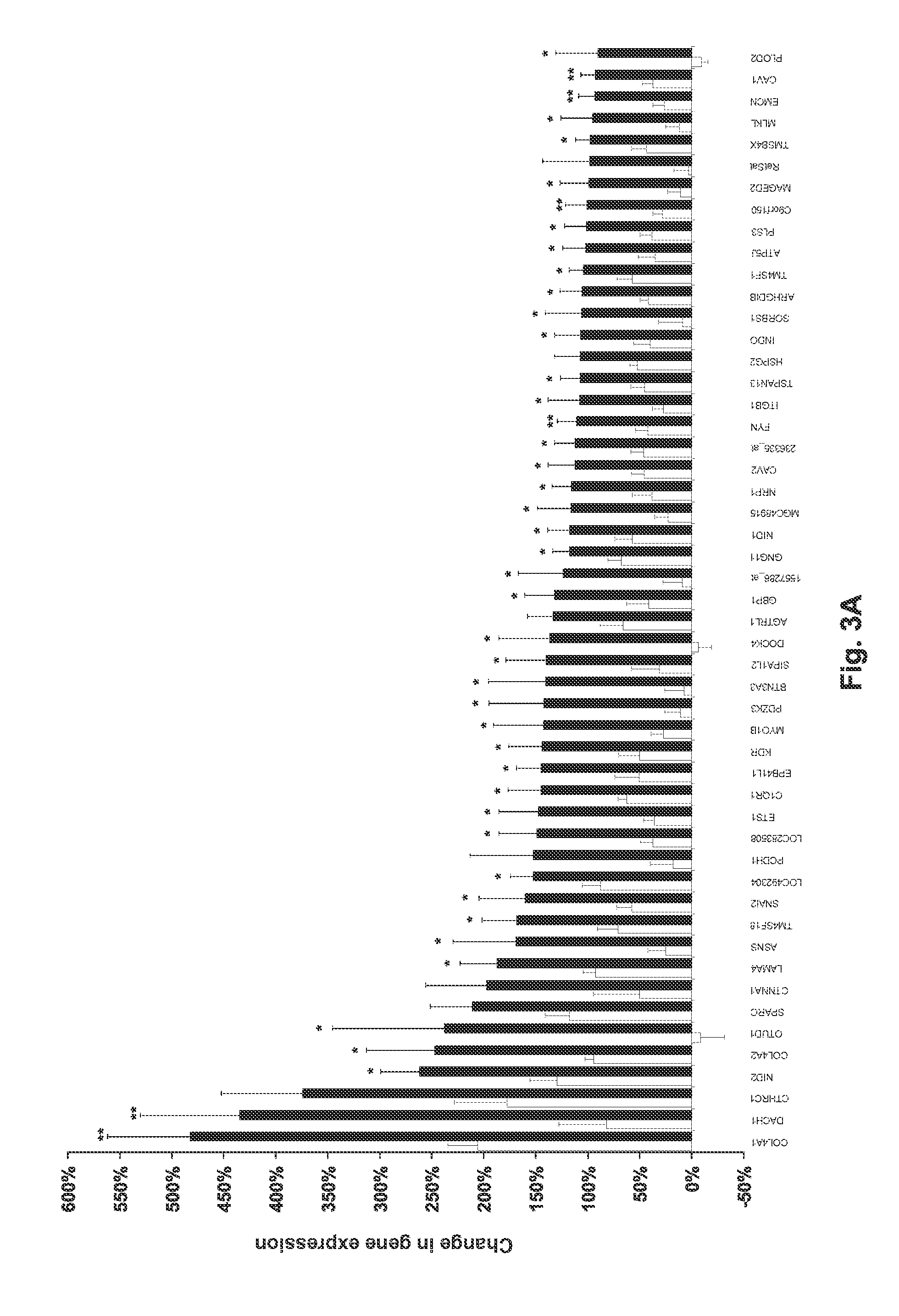Predictive Biomarkers for Response to Exercise
a biomarker and exercise technology, applied in the field of predictive biomarkers for exercise response, can solve the problems of no clinically proven method that has been independently validated, risk of developing or exacerbating cardiovascular or metabolic disease, and pharmacological therapies aimed at enhancing aerobic fitness, etc., to achieve the effect of aerobic capacity, high capacity to respond, and intensive pharmacological or dietary protocol
- Summary
- Abstract
- Description
- Claims
- Application Information
AI Technical Summary
Benefits of technology
Problems solved by technology
Method used
Image
Examples
example 1
[0039]Materials and Methods: Study Groups
[0040]Three independent clinical studies were used. The first (Group 1) was used to generate the predictor set of biomarkers, the second (Group 2) to independently validate the predictor set of biomarkers, and the third (Group 3) to assay for links between the predictor biomarkers and other candidate genes and genetic variation as seen in DNA SNPs, the DNA markers (FIG. 1). Each clinical study is based on supervised endurance training program with primarily sedentary or recreationally active subjects of differing levels of physical fitness which establishes that the results can be applied broadly to various types of aerobic exercise therapy and subjects.
[0041]Group 1 for Producing Molecular Predictor.
[0042]Twenty-four healthy sedentary Caucasian males took part in the study. Their mean (with the range) age, height and weight are given in Table 1. Body mass did not change during the study period (78.6±2.7 kg vs. 78.8±2.6 kg). Resting blood pre...
example 2
[0048]Materials and Methods: RNA and DNA Analyses
[0049]Affymetrix Microarray Process.
[0050]Total RNA was extracted from frozen muscle samples taken from Groups 1 and 2. Two samples were available for each subject, one taken pre-exercise and a second one taken post-exercise. RNA was extracted using Trizol reagent. Frozen pieces were homogenized for 60 s in 1 ml of Trizol using a 7 mm Polytron aggregate (PT-DA 2107, Kinematica AG, Switzerland) adapted to a Polytron homogenizer (PT-2100) running at maximum speed. RNA concentration and quality were controlled using a Bioanalyser. In-vitro transcription (IVT) was conducted using the Bioarray high yield RNA transcript labeling kit (P / N 900182, Affymetrix, Inc.). Unincorporated nucleotides from the IVT reaction were removed using the RNeasy column (QIAGEN Inc, U.S.A.). Group 2 in vitro transcription was performed using MessageAmp II Biotin Enhanced aRNA kit (Ambion, Inc). The effect of the IVT kit was assessed by processing two samples wit...
example 3
Three Step Model Used to Find Biomarkers that Predict Responsiveness to Intervention Therapy
[0060]FIG. 1 illustrates the analysis strategy and approximate sample sizes required to generated a molecular predictor based on pre-treatment gene expression, followed by validation, and then by identification of genetic variation. Similar sample sizes can be used to both generate the initial gene predictor set and to independently validate the observation. Gene expression can be measured using RNA, miRNA, or proteins, or other known methods. In the current work, RNA was measured and the sample sizes were 24 and 17 for the initial group and the validation group, respectively. The initial expression classifier, be it RNA or protein, can, for example, be derived from tissue or blood. The candidate genes can thereafter (Step 3) be used to locate genetic variants that are also correlated with the measured physiological function. This final step was based on a sample size of 473. These sample siz...
PUM
| Property | Measurement | Unit |
|---|---|---|
| diastolic blood pressure | aaaaa | aaaaa |
| diastolic blood pressure | aaaaa | aaaaa |
| physical working capacity | aaaaa | aaaaa |
Abstract
Description
Claims
Application Information
 Login to View More
Login to View More - R&D
- Intellectual Property
- Life Sciences
- Materials
- Tech Scout
- Unparalleled Data Quality
- Higher Quality Content
- 60% Fewer Hallucinations
Browse by: Latest US Patents, China's latest patents, Technical Efficacy Thesaurus, Application Domain, Technology Topic, Popular Technical Reports.
© 2025 PatSnap. All rights reserved.Legal|Privacy policy|Modern Slavery Act Transparency Statement|Sitemap|About US| Contact US: help@patsnap.com



